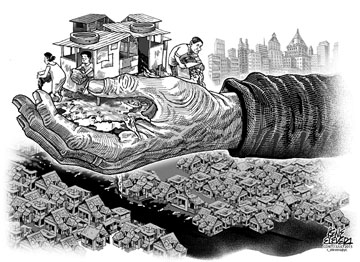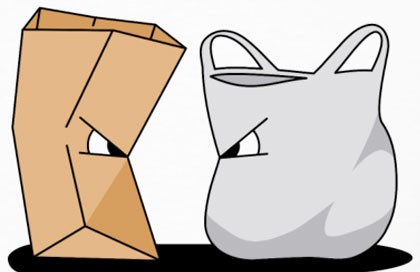There are an estimated 93 million slum dwellers in our country, with an urban housing shortage of nearly 18 million. The challenges confronting our cities with respect to our urban poor are daunting in view of the unprecedented scale at which India is expected to urbanise in the near future. It is said, that by 2030, India shall add about 250 million more to its existing urban population. The way India tackles its urbanisation, will be the key in determining whether a majority of these 250 million will add to the already burgeoning number of urban poor or no.
 Currently, most of our policies for Urban Poverty Alleviation work around providing freebies and/or subsidies. These provide the poor with the proverbial fish for the day, but not anything beyond that. Sure subsidies are an essential safety net for the poor, but they have an unintended effect of increasing inequality amongst the residents. What it effectively also does is, create a class of citizens that are largely dependent on state handouts who will continue to do so through no fault of theirs and thus perpetuating a culture of a mai-baap sarkar.
Currently, most of our policies for Urban Poverty Alleviation work around providing freebies and/or subsidies. These provide the poor with the proverbial fish for the day, but not anything beyond that. Sure subsidies are an essential safety net for the poor, but they have an unintended effect of increasing inequality amongst the residents. What it effectively also does is, create a class of citizens that are largely dependent on state handouts who will continue to do so through no fault of theirs and thus perpetuating a culture of a mai-baap sarkar.
Poverty alleviation cannot be achieved by a single minded focus on the provision of the lacking physical manifestation of the need. Giving a house to the homeless, or ensured employment to the jobless are self-limiting approaches to the cause of poverty alleviation. What is instead required is a zealous drive towards the provision of a quality of life. An improvement in the social, economic, cultural, educational and judicial parameters of a citizen’s life will have a greater impact on their ability to alleviate themselves out of poverty and relinquishing the need for the safety nets.
While the campaign urging people to give up subsidy is a good start, but not an end goal in itself. The savings through many such schemes should be effectively transferred to the creation of a social-economic infrastructure with the help of an assisting government would achieve two large objectives – reduce the number of dependents on government handouts, and also invariably reduce the governments dependency on the market in the provision of essential services. It will effectively shift from a PPP model where the public denotes the state, to one where it denotes enterprising individuals becoming players in the market. This can be achieved if strong community/co-operative institutions are allowed to grow. Enough examples are available in the social institutions of the Kutchi/Marwadi communities that offer financial and legal assistance to their members thus proving to be a strong support system for individuals to be able to dream big and achieve it too.
This radical approach of building of social infrastructure vis-a-vis direct provision of material requirements would considerable aid in poverty alleviation and also make our cities resilient and buffered from the inconsistencies of the free market.

